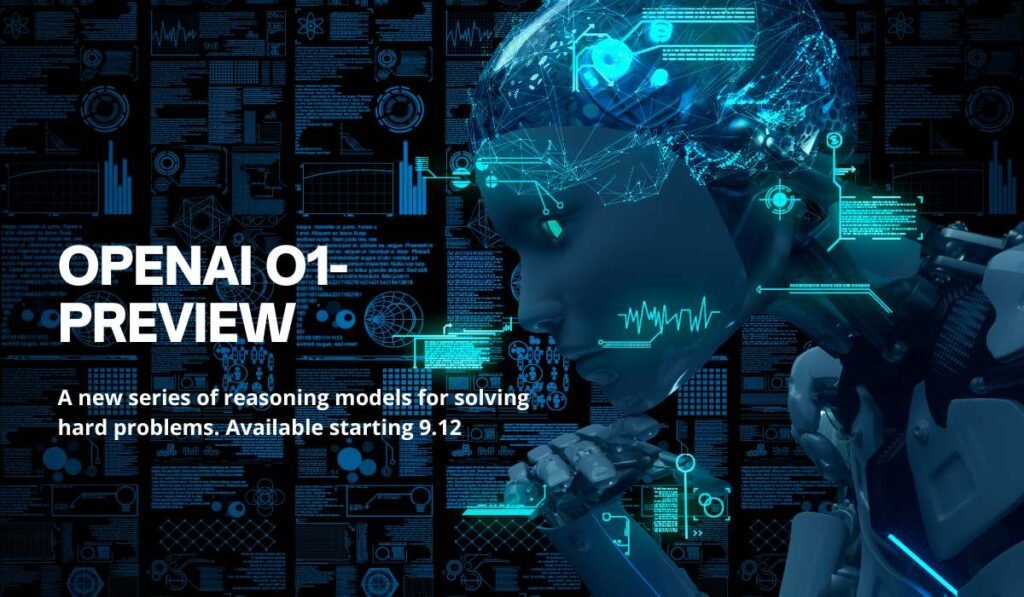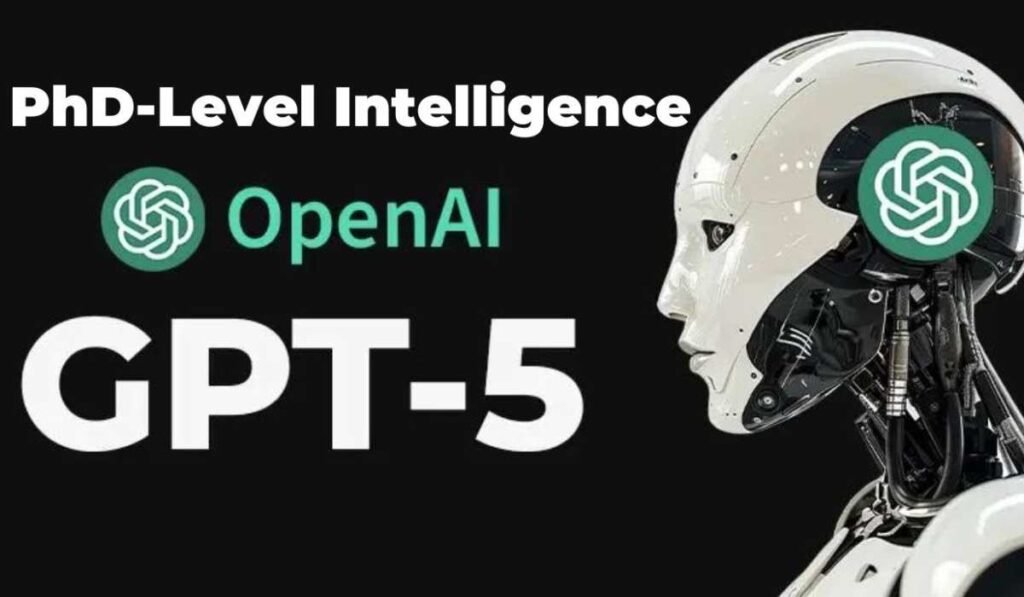The realm of artificial intelligence is abuzz with the latest release from OpenAI—the 01 Preview, a new AI model that promises to redefine our understanding of machine reasoning. Enthusiasts and researchers alike are eager to delve into the capabilities of this model, especially its potential utilization of a new cognitive architecture.
Recent explorations of the 01 Preview have tested its limits and offered insights into its functionalities. From challenging it with complex puzzles to probing its ability to exhibit system 2 thinking, these investigations have provided a fascinating glimpse into what could be a significant leap in AI development.
In this article, we’ll break down seven key insights from these explorations, shedding light on the intricacies of OpenAI’s new cognitive architecture and what it means for the future of AI.
1. Introducing the 01 Preview: OpenAI’s Latest AI Model
OpenAI’s 01 Preview, sometimes referred to as “Strawberry,” represents a step forward in AI models. Unlike its predecessors, this model appears to exhibit enhanced reasoning abilities, prompting discussions about whether it incorporates a form of cognitive architecture or multi-agent systems behind the scenes.
The 01 Preview might be leveraging self-prompting or meta-prompting techniques. These involve the model engaging in internal reasoning processes before producing a final output. Such approaches could explain the model’s longer response times and its ability to handle more complex tasks.
Moreover, the model seems to obfuscate some of its internal processes from the user. When asked certain questions, the 01 Preview takes noticeably longer to respond, suggesting that it might be performing multi-step reasoning or consulting internal modules before generating an answer.
2. Testing the Limits: Complex Problem-Solving Abilities
To evaluate the model’s capabilities, a series of challenging problems were posed. One notable test involved asking the model to write a 10-word coherent sentence where each word has exactly one letter more than the previous word, starting with a one-letter word and ending with a ten-letter word.
The model took an unusually long time—over a minute—to process the request. Ultimately, it struggled to produce a satisfactory answer. This prolonged processing time could indicate that the model is simulating a more human-like problem-solving approach, considering various possibilities before responding.
Another test involved a complex logic puzzle:
“You are faced with three gods A, B, and C, named True, False, and Random. You don’t know which is which. True always tells the truth, False always lies, and Random sometimes tells the truth and sometimes lies. You have to determine the identities of A, B, and C by asking three yes-no questions.”
The 01 Preview exhibited the ability to break down the problem, analyze logical dependencies, and propose a solution. This performance showcases the model’s potential for handling intricate logical reasoning tasks.
3. Evidence of System 2 Thinking in AI
A significant portion of the discussion around the 01 Preview has centered around the concept of system 2 thinking—a term from psychologist Daniel Kahneman describing deliberate, analytical, and slow thinking processes in humans. In contrast to system 1 thinking, which is fast and intuitive, system 2 involves conscious, effortful reasoning.
The 01 Preview seems to exhibit behaviors akin to system 2 thinking. When given complex puzzles or ethical dilemmas, the model appears to engage in internal deliberation before responding. For example, when asked to solve challenging problems that require multiple steps, the model takes longer to generate answers, suggesting it might be simulating a step-by-step reasoning process.
This capability could be a result of OpenAI implementing mechanisms that allow the AI to think through problems more thoroughly rather than relying solely on immediate, learned responses. Such mechanisms might include internal loops of reasoning, self-prompting, or meta-cognitive strategies that enhance the model’s problem-solving abilities.
4. The Role of Cognitive Architectures and Multi-Agent Systems
One hypothesis is that the 01 Preview might be utilizing a cognitive architecture or a multi-agent system. In traditional AI models, responses are generated based on learned patterns without significant internal deliberation. However, cognitive architectures aim to replicate the way human minds process information by integrating multiple components or modules that handle different aspects of cognition.
Previous work with cognitive architectures, such as the Raven project and the ACE framework, involves multiple agents or layers working together to process information and produce responses. The 01 Preview might have a similar setup, possibly involving a supervisor layer that oversees the reasoning process and ensures alignment with specified values or goals.
By incorporating such a structure, the AI can potentially evaluate potential responses, filter out misaligned or inappropriate outputs, and adhere to alignment parameters more effectively. This could explain why the model sometimes takes longer to respond—it might be internally debating or verifying its answers before presenting them.
5. Addressing AI Alignment and Ethical Reasoning
Alignment—the idea that AI systems should behave in ways consistent with human values—is a critical concern in AI development. The 01 Preview was posed with ethical dilemmas to explore this aspect. For instance, it was presented with the classic trolley problem, asking the AI to decide between actions that would harm different groups of people.
The model responded by analyzing the ethical considerations without committing to a specific action. It discussed various moral frameworks, such as utilitarianism and deontological ethics, and acknowledged the complexity of such decisions. This cautious approach suggests that the AI is designed to avoid making definitive statements on controversial issues, adhering to safety protocols to prevent harmful or unethical outputs.
While this demonstrates a level of ethical reasoning, it might also be due to programmed refusals to engage with certain topics. The model’s ability to reason about ethics without overstepping boundaries highlights the delicate balance developers must strike between AI autonomy and alignment.
6. Comparing with Previous AI Models
The 01 Preview has been compared to earlier models like GPT-3 and GPT-4. Earlier models would often rely on immediate, surface-level responses, sometimes producing incorrect or nonsensical answers when faced with complex tasks.
In contrast, the 01 Preview’s longer processing times and more thoughtful answers suggest a departure from this approach. Increasing the sophistication of AI systems often results in slower response times due to the complexity of internal processing. The 01 Preview seems to reflect this trend, possibly indicating that OpenAI has prioritized depth of reasoning over speed in this model.
Relying solely on larger models or more data has limitations. Integrating cognitive architectures or multi-agent systems might be a more effective way to advance AI capabilities. By allowing the AI to access different “skills” or modules—similar to how human brains function—it can compensate for areas where a single model might fall short.
7. Implications for Artificial General Intelligence (AGI)
The advancements seen in the 01 Preview raise questions about the trajectory toward Artificial General Intelligence (AGI)—an AI that possesses the ability to understand, learn, and apply knowledge in a way indistinguishable from a human.
While the 01 Preview demonstrates significant progress, it likely falls short of representing AGI. The model seems to compensate for limitations by employing software architecture techniques rather than exhibiting genuine intelligence breakthroughs.
Each advancement in AI requires considerable experimentation and cannot be solely attributed to scaling up models or data. The development of AGI would likely involve discovering new techniques or architectures that allow AI systems to understand and reason about the world more profoundly than current models.
A Step Forward in AI Reasoning
OpenAI’s new cognitive architecture showcased in the 01 Preview represents a notable advancement in AI reasoning capabilities. By potentially integrating internal reasoning processes, self-prompting, or multi-agent systems, the model demonstrates an ability to tackle more complex tasks and exhibit behaviors resembling human-like thinking patterns.
Explorations of the 01 Preview provide valuable insights into these developments, highlighting both the potentials and the challenges. The model’s ability to engage in deeper reasoning, handle intricate problems, and navigate ethical considerations marks a significant evolution in AI capabilities.
However, limitations remain. The model’s longer response times and occasional struggles with certain tasks indicate that there’s still room for improvement. Additionally, achieving true AGI will require overcoming fundamental challenges that go beyond current techniques.
As researchers and developers continue to refine these technologies, the prospects for more sophisticated and adaptable AI systems become increasingly tangible. OpenAI’s efforts with the 01 Preview pave the way for future innovations that may one day bridge the gap between narrow AI and general intelligence.
The 01 Preview, also known as 'Strawberry,' is OpenAI's latest AI model that aims to enhance machine reasoning capabilities, potentially utilizing a new cognitive architecture.
Unlike earlier models like GPT-3 and GPT-4, which provided immediate responses, the 01 Preview exhibits longer processing times and more thoughtful answers, suggesting a deeper internal reasoning process.
System 2 thinking refers to deliberate, analytical, and slower cognitive processes. The 01 Preview appears to exhibit this by engaging in internal deliberation before responding to complex problems.
Cognitive architectures aim to replicate human cognition by integrating multiple components that handle different cognitive tasks. Multi-agent systems involve several agents working together to process information, potentially enhancing reasoning capabilities.
Yes, the model has been tested with intricate problems, such as crafting sentences with words of increasing length and solving complex logic puzzles, demonstrating its potential for advanced problem-solving.
The model has been posed with ethical dilemmas, such as the trolley problem, and it has shown an ability to analyze moral frameworks without making definitive statements, reflecting cautious ethical reasoning.
While the 01 Preview showcases significant advancements in AI reasoning, it likely does not represent true AGI. Achieving AGI will require new techniques that allow AI to understand and reason more profoundly.
The model's longer response times may indicate that it is engaging in multi-step reasoning or internal deliberation, simulating a more human-like approach to problem-solving.
Self-prompting and meta-prompting involve the model engaging in internal reasoning processes before generating a final output, which may contribute to its ability to handle complex tasks.
Despite its advancements, the 01 Preview still faces limitations, such as occasional struggles with complex tasks and the need for further refinement to bridge the gap towards true AGI.





